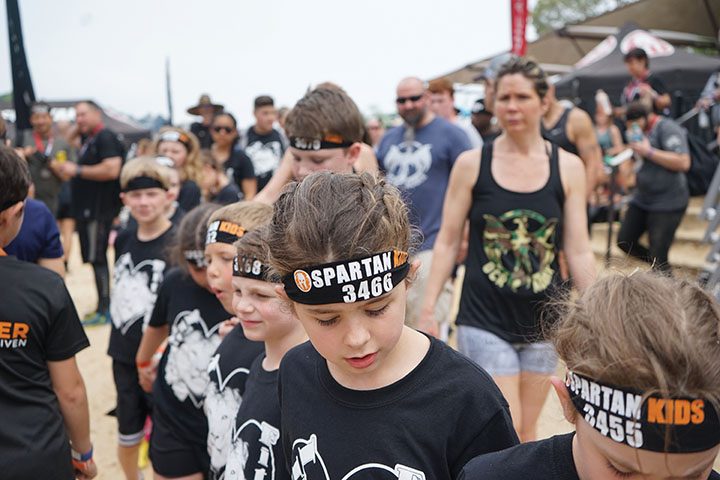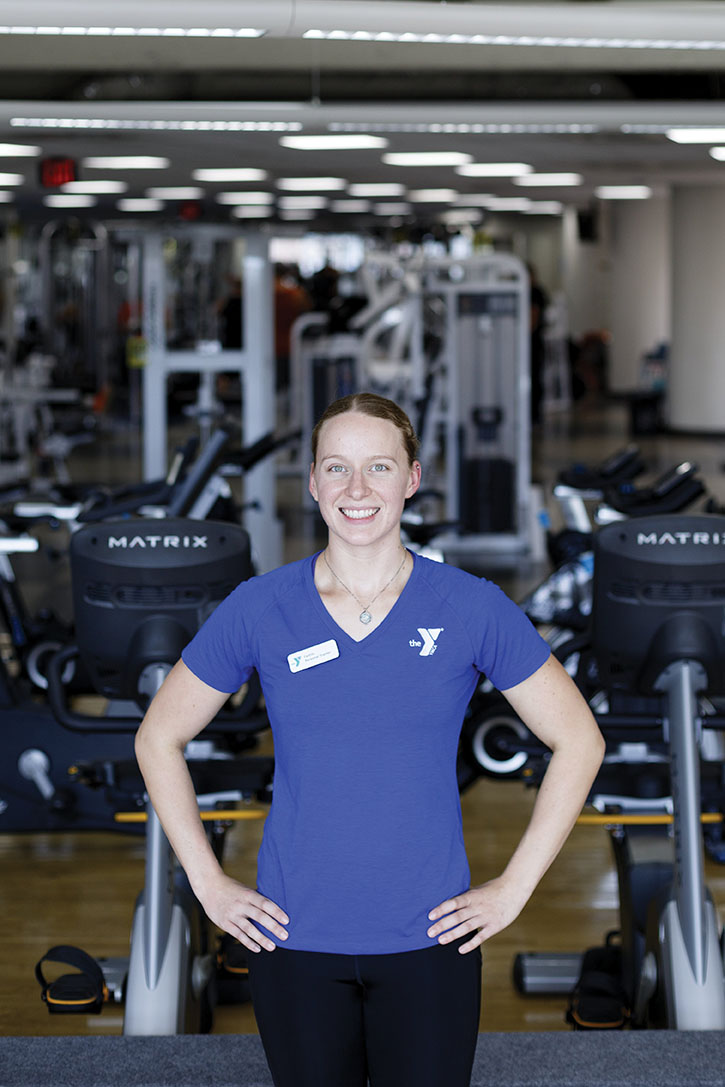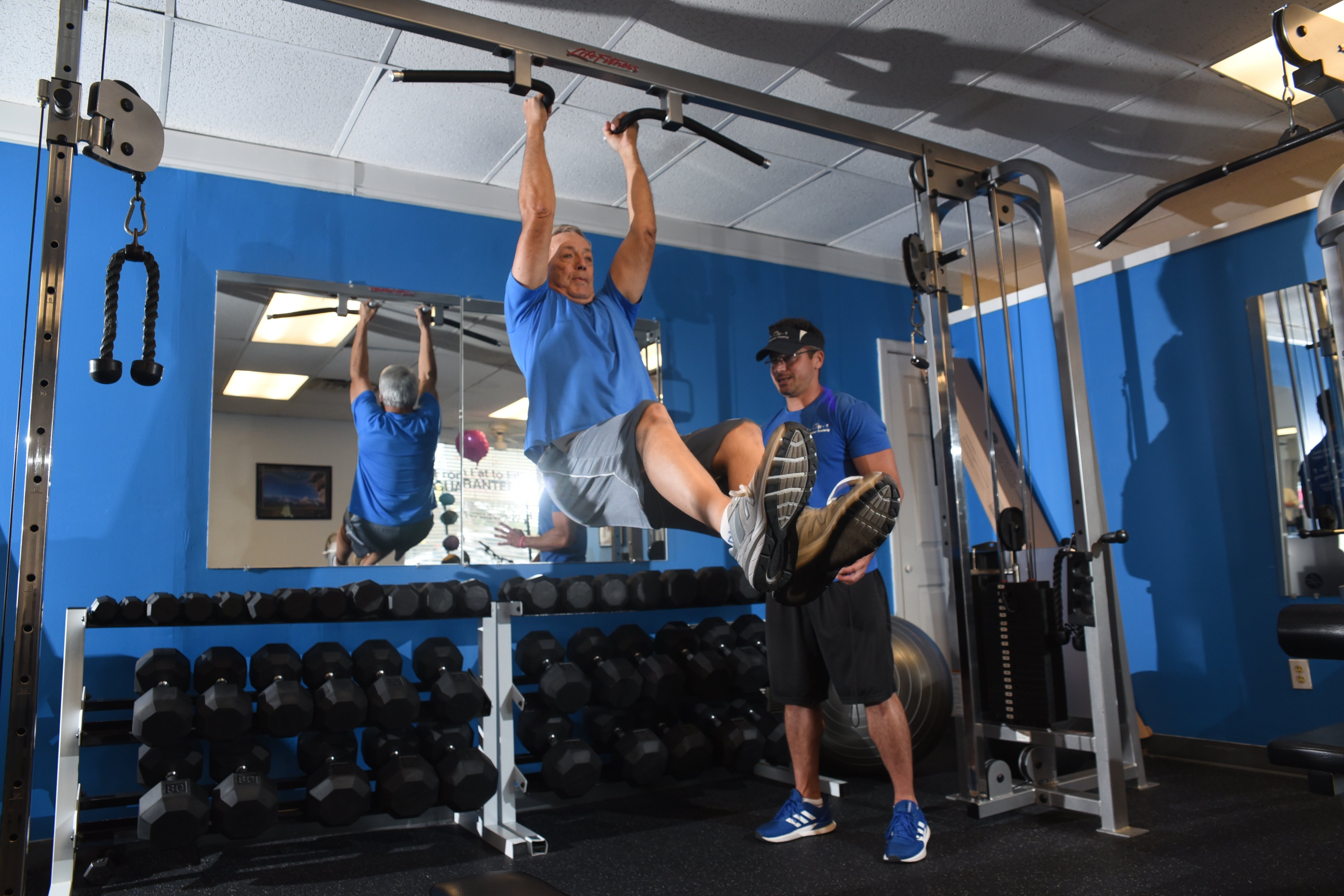Hanging from an overhead bar, Landon Sawyer lifts his knees up to his waist and down, up to his waist and down. "Whew!" he blows out following his 10th repetition.
In the minutes before those leg lifts, the 73-year-old does 15 stomach crunches while draped on his back over a large exercise ball. From there, he rolls back and forth 15 times on an exercise wheel. "Whew!" he exclaims each time he finishes.
The slim Sawyer says he doesn't have any medical problems or issues; he came to 1-On-1 Personal Training in East Brainerd about four years ago "because I just wanted to stay in shape." Now, he comes three days a week for 40-minute workouts each time.
"I feel a whole lot better - once the soreness goes away," he says with a chuckle.
Adam Seiler, owner/operator of 1-On-1, says age is not a hindrance to exercise and staying in shape. What works at 20 years old will work at 70.
"How the human body responds to exercise is the same no matter what age you are," says Seiler. "I've got a 98-year-old mother and her 71-year-old daughter as clients, and the mother outperforms her daughter."
However, trainers around Chattanooga all say there is one critically important caveat, whatever your age: Don't quit.
"You can't stop lifting at 25 and come back 40 years later and expect to jump right back in," Seiler says. "But if you maintained it all those years."
Maintaining can be difficult - especially if you don't enjoy the exercise you're doing. Choose wisely. Don't run if you hate running. Don't lift weights if you hate lifting weights. Just because a friend is doing a specific exercise and loving it doesn't mean you will.
"What's the best type of exercise? Whatever you'll actually do," says Liz Hathaway, assistant professor in exercise science at the University of Tennessee at Chattanooga.
"Don't force yourself," says Kelly Summersett, who started as a personal trainer in 2009. "I hear a lot of times, 'Oh, I have to go to the gym' or 'I need to go to the gym.' And you don't. You can do whatever the heck you want."
Basically, she says, it comes down to one thing.
"You have to develop your FLI, 'Feel Like It' muscle."
Feeling like it is not just something that must be conquered by adults, generally figured as about 18 to 65 years old. Kids, teens and seniors need to exercise, too, although each group has different reasons.
Kids
It would seem intuitive that it's a breeze to find exercises for young kids, say 5 to 10 years old. Ask any parent of kids in that age range and they'll probably answer that they have a hard time trying to keep them still.
But one of the best ways to make sure they're actually getting enough exercise is to fool them. Turn the exercises into fun. (Not a bad idea for teens and adults, either.)
"When it comes to working with children, even teens, play is the way to get to them," says Victoria Phillips, co-director of Lionheart Fitness in Ringgold, Georgia, which concentrates on 5- to 17-year-olds. "There's something about bringing the primal play instinct of just having fun and having no worries."
For younger kids, that means monkey bars and races and balance beams and ropes and obstacles for them to climb over and run around. Running is aerobic and helps develop lungs and heart strength; climbing and pull-ups lead to muscle strength and bone density.
"We're strong believers in using your own body as an exercise tool," Phillips says. "You're only going up against yourself."
Young kids - and adolescents, too - are going through major growth spurts and, without exercise of some kind, the cartilage at the end of long bones in the arms and legs - cartilage known as "growth plates" - won't strengthen enough, she says. Those plates turn to bone when growing stops.
"It's a very dangerous time for your plates," says Phillips. "If the plates close too soon, it will shorten the lifespan for your muscles and your body will never grow to your full potential."
In some cases, exercise is replaced by an iPad or Xbox or TV when parents need to keep their children quiet or entertained. And there are times when that's a good idea: while cooking dinner or doing laundry or some other chore, says Karissa Peyer, an assistant professor of exercise science at the University of Tennessee at Chattanooga. "When you have a lot of things to do, at least you know your child is there and safe," she acknowledges.
"But just be aware of how often you are trying to entertain with a device whereas the kid may instinctively want to be active," she warns. "Children generally, when given the option, will move."
Parents, too, should keep an eye on how much time they spend captivated by their devices.
"If they see their parent on the phone versus 'Hey, I'm going to go outside and do something,' the child may want to tag along," Hathaway says.
There are times when keeping a child entertained with a device goes too far, says Peyer.
"I walked out of Publix the other day and there was a toddler holding Mom's cellphone and he was just stopped in the doorway," Peyer says. "And she's saying, 'C'mon!" and is upset that he's not following her. And I think, 'Why would he? He's got everything he wants.'"
Recommended Routine ages 6-17
» At least three days a week, one hour of aerobic, muscle-strengthening or bone-strengthening exercise.
Aerobic: Running, including organized sports; swimming, biking, rollerblading, gymnastics, canoeing or kayaking, hiking or walking.
Muscle strengthening: Swimming, monkey bars, rope climbing, bench step-ups, calf raises, sit-ups, push-ups, squats, light weights, increasing in weight with age.
Bone strengthening: Walking, running, climbing, jumping rope, martial arts, gymnastics, tennis, organized sports such as basketball or football.
Source: U.S. Department of Health
Teens
Teenagers often seem to be the exact opposite of kids. The couch and video game remote control or the couch and the cellphone become "exercise." Fingers may become pillars of strength, but the rest of the body sags and muscles wilt.
The key, once again, is to make exercise fun, say Peyer and Hathaway. If the teen is a couch potato, telling them to lift weights or get outside and run may elicit an eye roll or "Ugh, are you kidding?" But they may rouse themselves if you ask if they'd like to play Ultimate Frisbee or hacky sack or maybe even take the dog for a walk, Hathaway says.
Lionheart Fitness operates on the same idea with teens: Trick 'em with exercise that seems like fun, says Director Michele "Shell" Luccketta. Get them playing a game of soccer or baseball, for example.
"They get physically fit by accident. It's all part of our diabolical plan," she says.
Even if they don't know it, and most don't, teens' bones are still developing, especially developing bone density - a key side effect of exercise, Peyer says.
"[Exercise] will help retain the bone mass that you have when you're younger. Build it through your youth, then it's about maintaining," she explains. "You're really laying down your bone densities when you're a kid. As an adult, the time frame to build that peak bone density is gone."
Lack of bone density can be a major problem when you get older, Hathaway adds.
"If you fall, especially if you're thin, that's when you go 'Snap!'"
Adults
Caitlin Scott knew she needed to make a change. Her job as a hotel manager was stressing her out. She was very overweight.
So, she hired a personal trainer at the downtown YMCA. Through lifting weights and aerobic exercises, she lost 70 pounds in 10 months, quit her hotel job and became a personal trainer herself.
"I learned to just love fitness, and I love exercise," she says.
But, like many adults, she had a misconception about exercise before she began.
"The only exercise I did growing up was PE in high school," she says. "And all they made us do is run for, like, hours at a time. I really did not like running."
Enjoyment is a critical factor for any adult, whether you're just starting out or have been exercising for a while. Find something you enjoy doing because, if you don't, you won't do it.
"Whether it's rock climbing or belly dancing or playing with your dog, anything," Summersett says. "Those add up and they do matter and they have a positive impact on your health. You're more likely to do them because you don't 'have' to do them and you're having more fun doing them."
If you exercise because you enjoy it, you get the benefit right then, Hathaway adds, which makes it easier than thinking about it as some sort of delayed gratification.
"It's trying to shift 'What do I get out of the exercise right now?' versus 'I'm not going to have a chronic disease in 30 years,'" she explains.
And don't overlook your social posse when it comes to your activity levels, Hathaway says.
"Who do you spend the majority of your time with? What behaviors are they engaging in?" she asks. "If they're naturally active, then you're going to be more likely to be active when you're with them."
Setting up an exercise obligation is a good way to keep at it, she says.
"Have a walking partner where this person is expecting you to be there at this time," Hathaway explains. "So maybe I wouldn't go if they wouldn't be there, but because they're going to be there and they're going to call my butt out if I'm not there Accountability is great."
Scott says she now takes a spin class and everyone keeps an eye on everyone else.
"If someone is missing, we're like, 'Why are you gone? Why weren't you here?' We keep ourselves accountable," she says.
Recommended Routine, ages 18-65
» Spread across the week, 2.5 to 5 hours of moderate-intensity or 1 to 2.5 hours of vigorous-intensity aerobic activity.
Moderate: Brisk walking, swimming, biking, jogging, mowing the lawn.
Vigorous: Running, spinning and aerobics classes, rowing machine.
» Two days a week, muscle strengthening activities of moderate intensity that involve all the major muscle groups.
Muscle strengthening: Weight machines, pull-ups and sit-ups, resistance tubes, rock climbing.
Source: U.S. Department of Health
Seniors
Exercise becomes especially important when you get to age 65-plus, trainers say. And despite some people's perception, a good workout is not off limits.
"I know people in their 70s, 80s, 90s who are super-active and are super-fit," Summersett says. "Age doesn't need to be a barrier."
But be smart about it, she says.
"If you haven't been doing anything for 40 years, it's not smart to go rock climbing, for instance. Listen to your body. Make sure you're easing to it. Don't overdo it," she warns.
Scott says one of her clients is a 72-year-old man "and he's still doing deadlifts and box jumps, squats and all of that. And I have a 72-year-old woman who is now just getting back into exercise after five years and she can barely do a squat. If you don't use it, you lose it."
Of course, life can throw a wrench into even the most dedicated senior's plans to stay in shape, Seiler says. If you had a motorcycle wreck when you were 21 or fell off a ladder when you were 40, those injuries must be taken into consideration, he says. Leg squats are a great exercise for muscle strength at any age, for instance, "but you won't want to do it if you're 75 with a double knee replacement," he says.
"If I had two 50-year-olds and two 80-years-olds, I would treat them differently because of their life histories," Seiler says.
In the world of exercise science, one way to tell whether a senior is in shape is "the activity of daily living."
"Can I get up and down the stairs while walking into my house while carrying a bag of groceries? Can I haul the vacuum up and down the stairs?" Peyer explains. "You don't want to have to get the tub installed that has the swing door. You want to be able to get in and out of your own tub."
Hathaway is more blunt.
"Can I get up and down off the toilet? That's what it comes down to. You want to be able to get up and off that toilet without calling for someone. So do your leg squats."
Recommended Routine, ages 65+
» First determine the amount of exercise you can handle based on your level of fitness. Also take any chronic conditions into account. Ideally, the following modalities will all be included.
Aerobic: Swimming, walking, jogging, water aerobics, biking.
Muscle strengthening: Light weight lifting, wall push-ups, stretching, squats, yardwork, wwimming, yoga, biking.
Balance training: Squats, yoga, Pilates, walking, wearing ankle weights. one-leg lift, stretching.
Source: U.S. Department of Health



